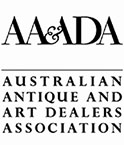‘Antiques’ can be purchased anywhere – The traditional places to buy antiques are through antique shops or centres, or at a collectors’ fair or auction. While you can pick up some great things at auction, it’s essential that if you are unfamiliar in dealing with antiques, do not bid on high value items. Auction houses too can make mistakes in their descriptions and you have no recourse – as the saying goes ‘buyer beware’.
In all cases, you should investigate the place you plan to make your purchases and establish that it is a reputable source. Some fairs and auction houses vet dealers’ stock in advance to ensure they are authentic and accurate. You can also look online for reviews, or use specialist internet forums to seek recommendations. It’s also worth checking which professional bodies the dealer or shop owner is a member of. This might include the Australian Antique and Art Dealers Association and CINOA. The most important rule of thumb however, is to get a Certificate of Authenticity. If the seller will not supply one, do not buy the piece as you have no recourse in the event you find out it is a fake.
Shopping online for antiques has become increasingly popular. Online gives you access to a far greater array of antiques but is also the forum in which most caution should be exercised and unless you’re paying nothing for a piece, it’s essential to follow these tips:
What to ask…
- Always ask for a Certificate of Authenticity, and if they won’t provide one, do not buy. The certificate must have a full description of the item, the dealer contact details and address, the age of the piece and ideally, a photo;
- Ask the supplier what makes the piece antique – how do they know. Don’t be embarrassed – ask them to explain it as it shows that you are a smart buyer and you’re less likely to be taken advantage of;
- Ask them about their experience and how they came to be a dealer and for how long;
- Ask them what shipping guarantees they will provide, for example, if a piece breaks in transit what are your options?;
- Ask them what their policy is if it arrives at your door and it’s not what was represented on the website or you do not like it when you see it. Any dealer ‘worth their salt’ should give a full refund.
- Ask for detailed photos i.e. the back of the piece, underneath the piece, closeups of inlay, under the marble etc etc.
- Ask for a written condition report – again this provides you with recourse.
- Take a very close look at a piece. Unless a piece is restored, an antique is likely to have some honourable scars. So, it is then a question of what is honourable and what is not. For example, is the piece all original or has it been ‘made up’? Is the carcass timber moving and causing the inlays to move (unacceptable), or is the glue just loose under the inlays which is an easy fix. Is the glass in the mirror frame original, is the back of the mirror original? Is it gilt or gold paint – ask the dealer how they know that it’s gilt as there are telltale signs. Are there witness marks that something has happened over time. Is the marble original, and if not, do not pay the price you would for an original marble.
- Find out if the price includes restoration.
- Ask, ask, ask. There is no such thing as too many questions – if you don’t ask, you won’t learn.
- Enquire about damage and any restoration that has been undertaken.
- Always secure a receipt, even if you pay in cash, and ask the dealer to list all the salient details about the item – age, material, damage, restoration, etc. If a dealer won’t give a receipt, it suggests he or she is not reputable and it’s probably best to walk away, however much you want the item.
- Ask for a ‘Certificate of Authenticity’.
- If you’re buying an expensive piece – or one that is linked to a particularly historical event – ask if it has provenance. Often this will be lost, however if provenance has not been lost it’s a wonderful thing to take along with the piece. This is proof of its origins and history. It could come in the form of purchase receipts, evidence and/or appraisals from auction houses, photographs and/or historic records, signatures or stamps. Remember though – contrary to popular belief, most antiques were not signed, even many of the very best ones. In fact, if a piece was commissioned for a particular wealthy home, it was even less likely to be signed or stamped and provenance on most items has been lost over time.
- Check authentication marks. These are almost always present in china, pottery and silverware.
- Fakes abound so be careful. Again you’re less likely to run into this issue buying from a reputable dealer. If you know nothing about antiques and want to buy them, seek information from those that know.
Investing a bit of time and energy in finding some quirky and original pieces for your home is not only a great way to create a stunning living environment, it can also be a fun way to learn about life in days gone by.
Do you have another question? Just fill out our Enquiry form, and we will get back to you.
Send an Enquiry
"*" indicates required fields



